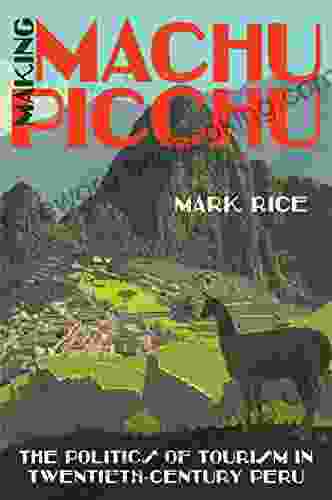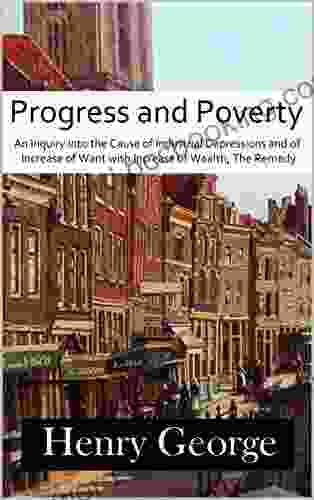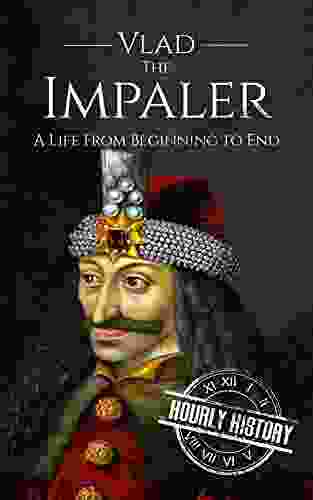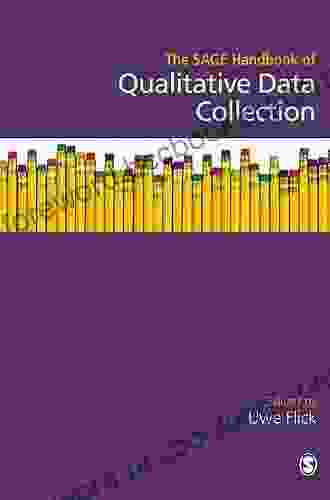The Politics of Tourism in Twentieth Century Peru


4.6 out of 5
| Language | : | English |
| File size | : | 20310 KB |
| Text-to-Speech | : | Enabled |
| Screen Reader | : | Supported |
| Enhanced typesetting | : | Enabled |
| Print length | : | 252 pages |
: Setting the Stage
Nestled along the western coast of South America, Peru possesses a treasure trove of captivating attractions that have long lured travelers from around the globe. From the enigmatic ruins of Machu Picchu to the vibrant streets of Lima, Peru's rich cultural heritage and breathtaking natural beauty have cemented its place as a must-visit destination.
However, the story of Peruvian tourism is not merely one of sun-kissed beaches and ancient wonders. It is an intricate narrative that intertwines with the nation's political, social, and economic fabric, shaping its destiny in profound ways. "The Politics of Tourism in Twentieth Century Peru" offers a comprehensive examination of this dynamic relationship, shedding light on the intricate interplay between tourism and the various forces that have molded Peru's history.
Tracing the Historical Roots
The roots of Peruvian tourism can be traced back to the early 20th century, when the country began to emerge as a destination for adventure seekers and explorers. The opening of the Panama Canal in 1914 made it easier for tourists to reach Peru, and the country's stunning scenery and archaeological sites quickly gained international recognition.
However, the political landscape of the time was often fraught with instability and economic challenges. Military coups and authoritarian regimes plagued the nation, creating an uncertain environment for tourism development. Despite these obstacles, a small but dedicated group of entrepreneurs and government officials recognized the potential of tourism as a means of economic growth and national pride.
The Boom and Bust of the Tourist Industry
The 1960s marked a turning point for Peruvian tourism. A period of relative political stability and economic growth led to a surge in tourism, making it one of the country's leading industries. Hotels, restaurants, and transportation infrastructure sprang up to accommodate the influx of visitors.
However, the boom was short-lived. The 1970s witnessed a return to political turmoil and economic crisis. Inflation, terrorism, and social unrest severely impacted the tourism industry, causing a sharp decline in visitor numbers. Many businesses closed their doors, and the once-thriving tourism sector was left in a state of disarray.
Tourism as a Tool for Political and Economic Development
The 1980s and 1990s were a time of major political and economic transformation in Peru. The country underwent a transition to democracy and implemented sweeping neoliberal economic reforms. Tourism was seen as a key component of the nation's economic recovery and development strategy.
The government invested heavily in tourism infrastructure and promotion, aiming to attract foreign investment and create jobs. New hotels, airports, and tour operators emerged, and Peru's image as a tourist destination was carefully crafted to highlight its cultural and natural assets.
The Challenges and Opportunities of Tourism Development
The expansion of tourism in Peru has brought both benefits and challenges. While tourism has contributed to economic growth, job creation, and poverty reduction, it has also raised concerns about its environmental and social impact.
The influx of tourists has put a strain on natural resources, particularly in fragile ecosystems such as the Our Book Library rainforest and Machu Picchu. Overcrowding, pollution, and waste management issues have also become challenges in popular tourist destinations.
Balancing the benefits of tourism with the need to protect the environment and promote responsible tourism practices is a complex задача. The Peruvian government and tourism industry have implemented measures to mitigate the negative impacts of tourism, including regulations on tour operators, conservation programs, and initiatives to promote sustainable tourism practices.
Tourism and the Transformation of Peruvian Society
Tourism has also had a profound impact on Peruvian society. The interaction between tourists and local communities has led to cultural exchange and increased awareness of Peru's rich heritage. However, it has also created tensions and challenges.
The influx of tourists has led to changes in traditional lifestyles and values in some communities. The commodification of culture and the pressure to meet the demands of tourists can undermine local traditions and customs. Balancing the benefits of tourism with the preservation of local identity and cultural integrity is a delicate task.
The Future of Tourism in Peru
As Peru continues to develop economically and socially, tourism is likely to remain a major industry. The country's rich cultural heritage, stunning natural beauty, and growing reputation as a sustainable tourist destination position it well for continued growth in the years to come.
However, the challenges of responsible tourism development remain. The Peruvian government and tourism industry must work together to mitigate the negative impacts of tourism and ensure that the benefits are shared equitably with local communities.
The book "The Politics of Tourism in Twentieth Century Peru" provides a comprehensive and nuanced analysis of the complex relationship between tourism and politics in Peru. It draws on a wealth of archival research, interviews, and data to shed light on the historical, economic, social, and environmental dimensions of tourism development in the country.
Whether you are a scholar, policymaker, industry professional, or simply interested in understanding the role of tourism in the modern world, "The Politics of Tourism in Twentieth Century Peru" offers a valuable and thought-provoking examination of this fascinating subject.
Free Download your copy of "The Politics of Tourism in Twentieth Century Peru" today and delve into the captivating story of tourism's profound impact on Peru's history, society, economy, and environment.
4.6 out of 5
| Language | : | English |
| File size | : | 20310 KB |
| Text-to-Speech | : | Enabled |
| Screen Reader | : | Supported |
| Enhanced typesetting | : | Enabled |
| Print length | : | 252 pages |
Do you want to contribute by writing guest posts on this blog?
Please contact us and send us a resume of previous articles that you have written.
 Book
Book Novel
Novel Page
Page Chapter
Chapter Text
Text Story
Story Genre
Genre Reader
Reader Library
Library Paperback
Paperback E-book
E-book Magazine
Magazine Newspaper
Newspaper Paragraph
Paragraph Sentence
Sentence Bookmark
Bookmark Shelf
Shelf Glossary
Glossary Bibliography
Bibliography Foreword
Foreword Preface
Preface Synopsis
Synopsis Annotation
Annotation Footnote
Footnote Manuscript
Manuscript Scroll
Scroll Codex
Codex Tome
Tome Bestseller
Bestseller Classics
Classics Library card
Library card Narrative
Narrative Biography
Biography Autobiography
Autobiography Memoir
Memoir Reference
Reference Encyclopedia
Encyclopedia Jessie Ware
Jessie Ware Icon Digital Publishing
Icon Digital Publishing Helen Clarke
Helen Clarke Hiroshi Shimizu
Hiroshi Shimizu Talek Nantes
Talek Nantes Hassan Abbas
Hassan Abbas Howard Burton
Howard Burton Harold Schechter
Harold Schechter Michelle Meagher
Michelle Meagher Howard Beckerman
Howard Beckerman Peter Schwenger
Peter Schwenger Henning Nelms
Henning Nelms Maggie Nelson
Maggie Nelson Helen Tupper
Helen Tupper Harley Pasternak
Harley Pasternak Henry Miller
Henry Miller Harry Mazer
Harry Mazer Shahla Talebi
Shahla Talebi Steve Russell
Steve Russell Hena Khan
Hena Khan
Light bulbAdvertise smarter! Our strategic ad space ensures maximum exposure. Reserve your spot today!
 Henry GreenFollow ·17.7k
Henry GreenFollow ·17.7k Joe SimmonsFollow ·8.4k
Joe SimmonsFollow ·8.4k Ashton ReedFollow ·16.1k
Ashton ReedFollow ·16.1k Colton CarterFollow ·18.5k
Colton CarterFollow ·18.5k Jorge AmadoFollow ·13k
Jorge AmadoFollow ·13k Anton FosterFollow ·19k
Anton FosterFollow ·19k Howard BlairFollow ·7.7k
Howard BlairFollow ·7.7k Brett SimmonsFollow ·7.9k
Brett SimmonsFollow ·7.9k
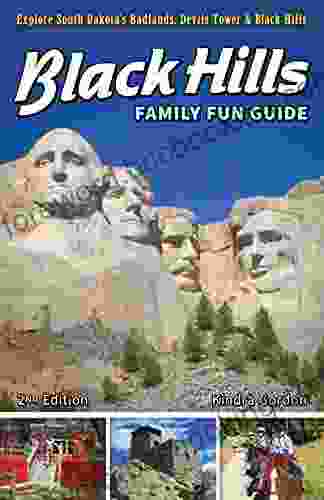
 Fabian Mitchell
Fabian MitchellUnleash the Adventure: Family Fun in the Black Hills
Nestled amidst the rolling hills...
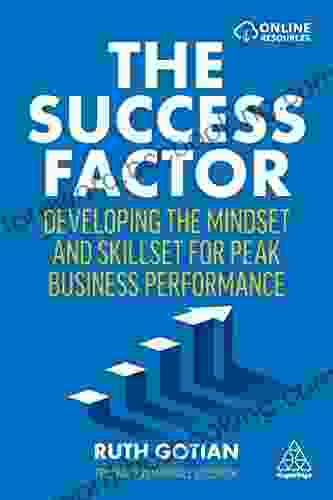
 Alfred Ross
Alfred RossUnleashing Peak Business Performance: A Journey of...
In today's rapidly evolving business...
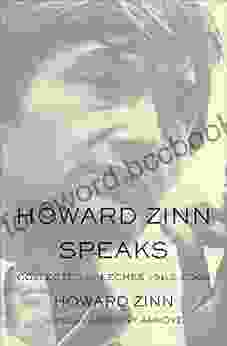
 Fernando Bell
Fernando BellEmbrace the Prophetic Voice of Howard Zinn: A Journey...
As we navigate the complexities of our...
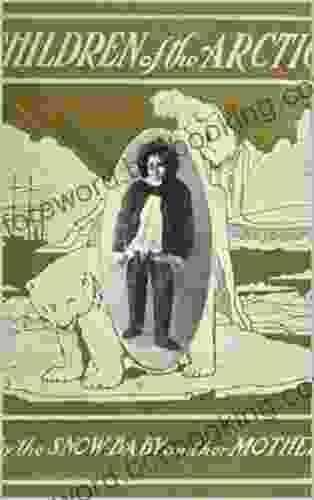
 Jonathan Franzen
Jonathan FranzenChildren of the Arctic: A Literary Expedition to the...
In the annals of...
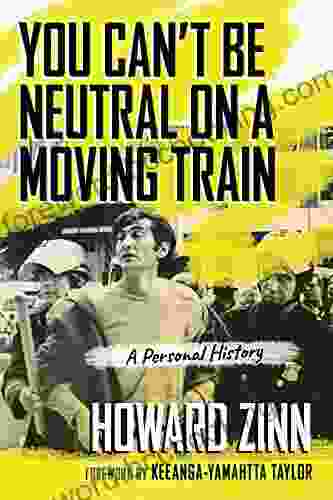
 Branson Carter
Branson CarterYou Can Be Neutral on a Moving Train: A Transformative...
Welcome, dear reader,...
4.6 out of 5
| Language | : | English |
| File size | : | 20310 KB |
| Text-to-Speech | : | Enabled |
| Screen Reader | : | Supported |
| Enhanced typesetting | : | Enabled |
| Print length | : | 252 pages |


